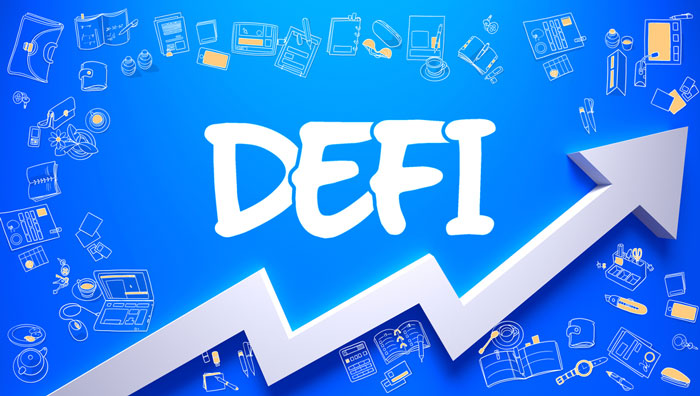
The impressive growth of the DeFi (decentralized finance) market since the beginning of the year has shown us thathigh demand for revenue generating protocols despite the risky nature of these new financial products.
The value proposition of DeFi is clear: Unhindered access to a variety of financial services gives the user a significant amount of power while increasing their financial sovereignty.
Availability of financial services, economicefficiency, compatibility and liquidity on demand are only part of the opportunities created by various DeFi projects, even if at the moment it is mainly about revenue generation and high risks.
These risks generally fall into four main categories:
- Risks in the code
- Risk of oracles / centralization
- Financial risk
- Regulatory risk
Risks with code
Coding risks are related to attack vectors,which can be used because of the underlying code that supports a given protocol or platform. DeFi is simply a suite of software built in lines of code that supports a variety of financial services.
Given the complex nature of DeFi protocols,It is not uncommon for the code to contain errors that can provide attackers with an attack vector with which they can steal funds (which they use successfully).
However, in addition to the obvious risk of losing funds inAs a result of the hack, this category of risks also poses a significant threat to the entire DeFi ecosystem. Due to the interoperability feature in DeFi, the instability of a single protocol could well pose a risk to the entire connected ecosystem.
In its new report “The Third GlobalA Comparative Study of Crypto Assets ”The Cambridge Center for Alternative Finance explained this risk as follows:“ Bundling and combining of smart contracts also pose a risk. If the underlying smart contract is damaged, the entire group could fall like a house of cards. ”
Risk of oracles / centralization
Many protocols in the DeFi space depend oncentralized tool or from its use. Due to the unsettled nature of the DeFi sector, development teams have systems at their disposal that give a centralized party certain powers to reduce performance degradation or reduce attacks.
Ironically, while these centralized systems provide some benefits to the evolving platform, they also pose significant risks to the functioning of the ecosystem.
Take, for example, oracles that are useda number of Automatic Market Makers (AMM) and Decentralized Exchanges (DEX). Typically, they receive data from a single source. This can be risky, as an attacker can easily take control of this data source and manipulate the market for profit.
It is important to note that most of the commandsdevelopers are focused on phasing out the centralized aspects of their ecosystems, but as long as these tools are applied, they still pose risks. According to a comparative study of cryptoassets, “Oracles, hardware or software, transfer data from the real world to a smart contract. Several attacks targeting decentralized protocols have shown that oracles are a potential source of systemic risk and their role as a data transmission channel is subject to possible manipulation. ”
Financial risk
DeFi protocols are based on public blockchains. Typically, these blockchains have their own digital asset. Its pricing characteristics can affect the value of stocks locked in the DeFi protocol. It can be profitable, but there is also the possibility of losses.
In addition, there is a risk of short-term loss. Intermittent loss refers to the phenomenon where the tokens stored in the AMM have a different value than if they were stored in the wallet.
Balancer Protocol defines shortloss as "the percentage by which the value offered by the pool is less than it would be if the user simply kept the tokens outside the pool instead." It is important to note that IR is considered to be an indicator that levels itself out as the user is in the AMM. However, the risk still remains.
Regulatory risk
Just like the mainstream cryptoasset sector,The DeFi industry is subject to regulatory uncertainty. Because of its novelty, the blockchain industry is under the scrutiny of regulators tasked with protecting various sectors of society.
Unfortunately, due to a combination of factors such aslack of understanding and complexity of technology, some regulators and jurisdictions are not happy with the DeFi sector. Hopefully, over time, this problem is likely to be resolved.

Rate this publication





